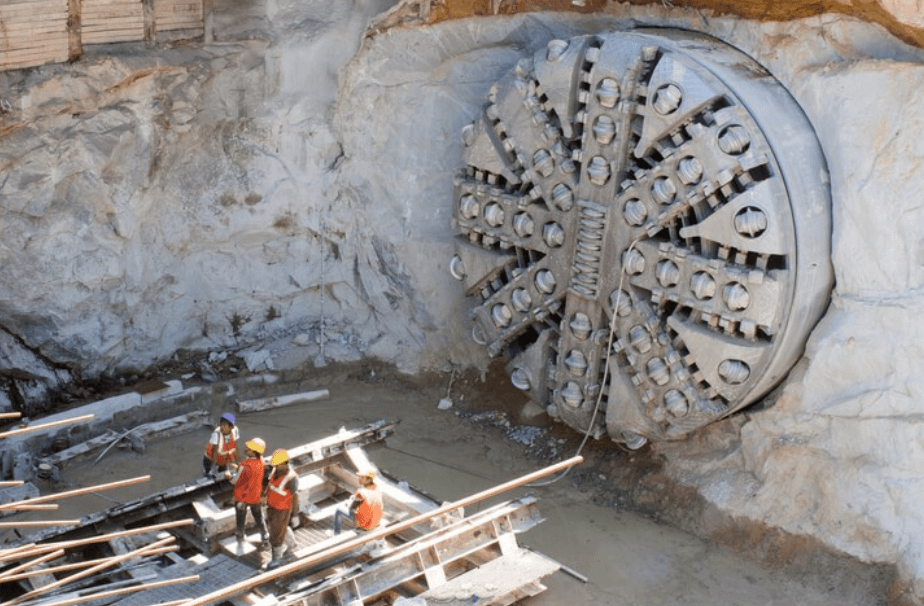What Does
Chipping Mean?
Chipping is an overarching term that refers to the process of removing hard or dried material (rock, concrete, etc.) from a surface. During chipping, the hard material is impacted with a tool that breaks it up into smaller pieces, usually for the purposes of removal.
In trenchless construction, tunnel boring machines are typically equipped with cutting tools that enable rock and other hard geological strata to be broken into smaller, more manageable pieces to allow the machine to advance.
For example, disc cutters may be mounted at the cutting head of a tunnel boring machine. These cutters create compressive stress fractures in the rock, causing it to chip or flake away from the face of the tunnel. Several properties of the rock determine its ability to be chipped, including the presence of discontinuities, compressive strength, tensile strength, and hardness.
Trenchlesspedia Explains Chipping

Figure 1: Cutting head of a tunnel boring machine (Source: Manu Bahuguna)
While chipping can be used to refer to the removal of rock during tunneling, the term has a broader meaning in the construction industry.
Chipping can also be used to refer to the removal of cured or dried concrete from a particular surface. For example, dried concrete must be periodically removed in concrete trucks, storage silos, and mixers.
Excessive buildup of dried concrete can lead to several problems in trucks and mixers, such as slow operation and equipment breakdown. Chipping ensures that equipment that is in frequent contact with concrete is cleared of clogs for safe and efficient operation.
Construction personnel may use various tools, such as handheld jackhammers, to apply an impact force to the concrete, causing it to chip away.
Chipping is also done at the top of piles during auger piling. After the auger has excavated the borehole, concrete is poured and typically overflowed to ensure that all impurities are removed from the hole. This overflow results in excess concrete at the top of the pile where the pile cap needs to be installed.
The area near the surface of the pile is excavated, and the extra concrete is chipped away above the pile cut-off level to provide a sound base for the pile cap installation.